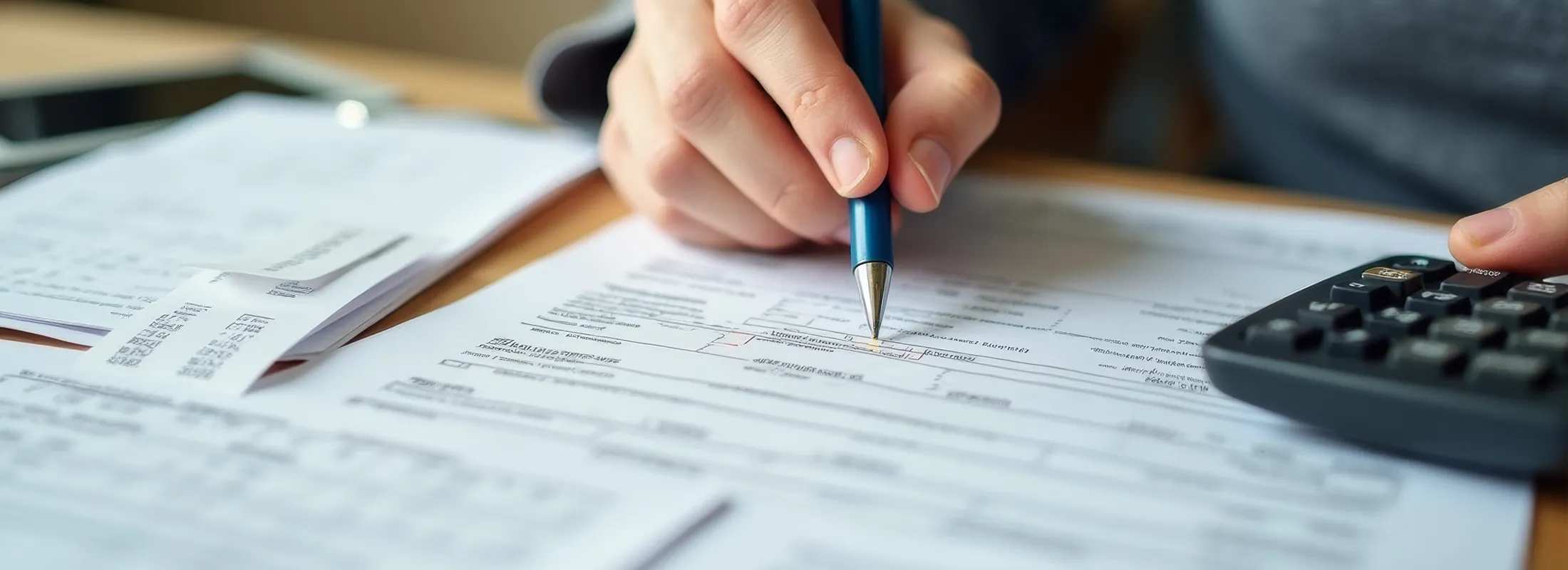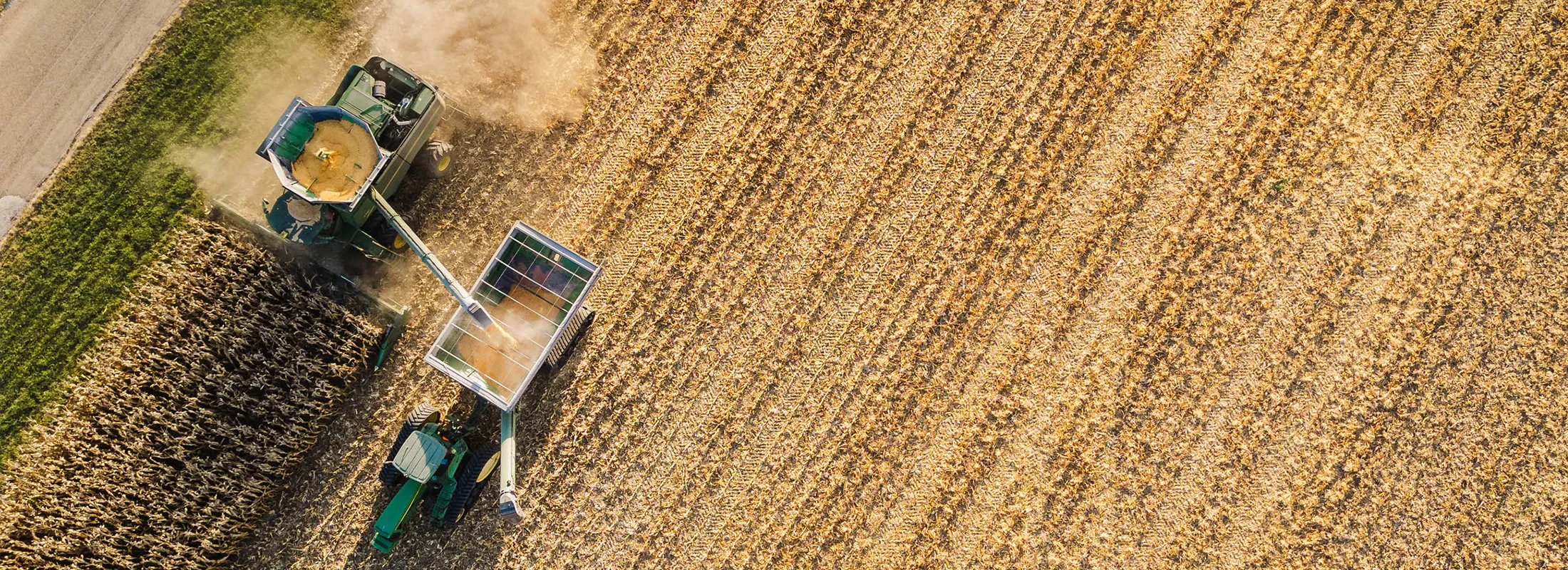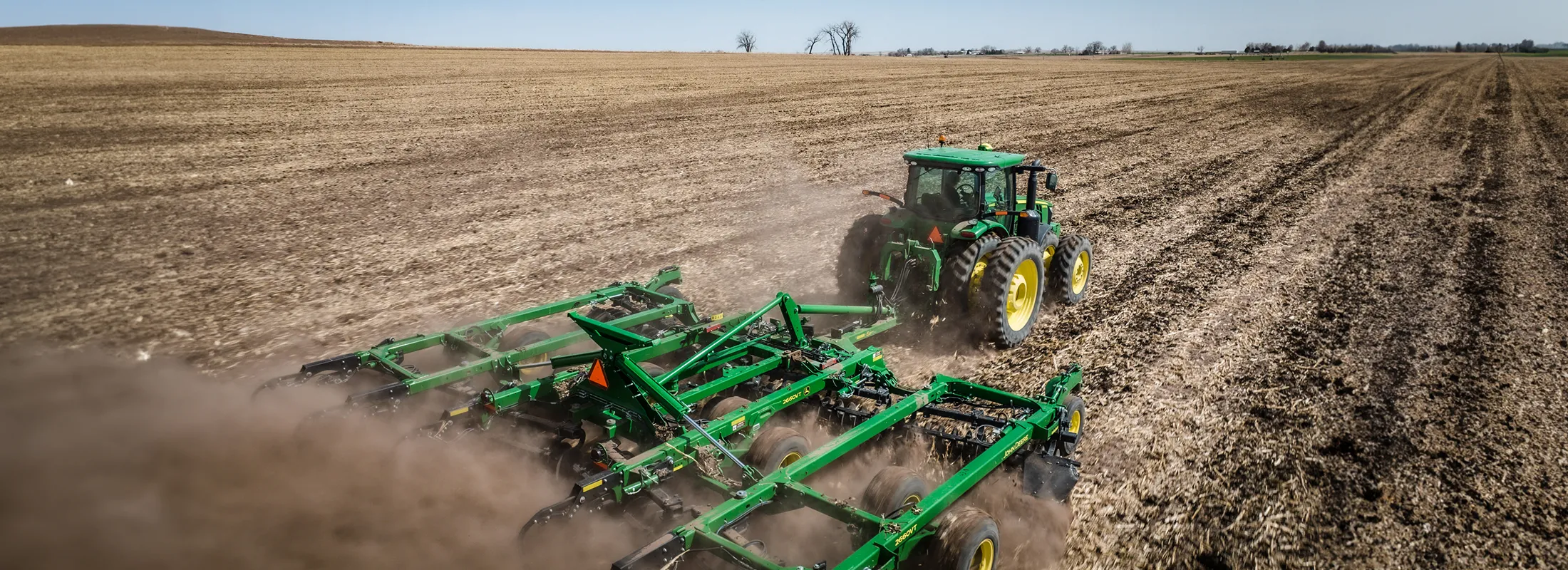AgDirect® asked industry partners and experts to share what to expect in the 2026 farm machinery market. Several themes emerged: cautious spending, value-driven purchasing, evolving financing strategies, and strong interest in used equipment.
- Casey Seymour of Global Iron Development is a thought leader in the field of used equipment.
- Marc Rosenbohm is a senior analyst with Terrain™ and expert in equipment economics.
- Clint Hurst is the owner and president of LoneStar Ag, a farm equipment dealership with four locations in Texas.
What shifts in equipment costs and sales do you see coming in the next year?
Casey Seymour: I expect to see a modest price increase of 2-4%. This would be in line with most average years. I don’t expect to see a big uptick in new orders for 2027 delivery, and the order board is filled for 2026 deliveries already, which will be off from last year.
Used equipment pricing will see stabilization, as retail pricing and auction values continue to tighten and align with the 120% rule. Looking at the market now, unit numbers are decreasing largely because of the lack of new deliveries replenishing used trades. The number of units sold at auction has decreased but are still at elevated levels. Because of this, used inventory numbers are decreasing, and I would expect to see a similar event in 2026. I am anticipating a market similar to that of 2009-2011, where the lack of new production will shift demand to late-model low-hour equipment for the nonannual roll customer.
Marc Rosenbohm: We continue to see weakness in used equipment prices this year, which continues to pressure trade-in values down for farmers looking to upgrade their equipment lineup. New equipment prices are likely to continue to be sticky as manufacturers work to scale back production slightly while also facing higher manufacturing input costs themselves. For farmers in the market for used equipment, now and over the next year could be a good time to find deals on good quality used equipment that dealers or individuals are looking to move.
Clint Hurst: It’s tough to predict with certainty because tariffs and supply chain issues still play such a big role, but I do think we’ll see equipment costs inch up a bit. Not because demand isn’t there—farmers still need the tools to get their work done—but because the cost of parts and materials continues to rise. On the sales side, I don’t expect demand to fall off, but we may see some slowdown simply because getting machines from the factory could take longer than it has in the past.
What rate and financing trends do you expect?
Rosenbohm: Rates generally remain elevated relative to where they were just a few years ago, so taking advantage of even used equipment opportunities may still be costly for farmers. Being on the lookout for incentives and carefully weighing alternative financing options can be important for managing overall equipment costs over the next few years.
Hurst: Financing feels like it’s going to stay about the same as it’s been the last couple of years. We don’t expect any big swings, which is good for customers planning their purchases. Low-rate programs from OEMs will continue to help, and I think financing overall will remain steady and reliable.
What shifts in buyer sentiment do you expect?
Seymour: I think there will be a more positive swing in the market. I look for higher commodity prices to combat rising input costs.
Hurst: Buyers are cautious right now. Tariffs and the overall economy weigh heavily on people’s minds, and most don’t want to make a big purchase unless they’re sure it’s the right move. At the same time, customers are becoming more strategic—really thinking through whether the purchase adds value to their operation and if the timing makes sense.
What supply and demand trends do you expect in farm machinery and equipment?
Seymour: I expect to see a pickup in late-model low-hour demand. The lack of new sales will generate less opportunity for “new” used trades to replenish what has sold, opening the door for what is currently on the ground to move and flushing out the washout cycle to the beginning of a further thinning of the used inventory on dealers lot.
I am also paying close attention to how upgrade kits are playing into the buying decisions of farmers. What does it cost to replace the complete machine versus the cost to upgrade components.
Rosenbohm: Elevated inventory-to-sales ratios indicate good general availability of equipment, while sales of new equipment are down year-to-date, indicating weak demand as we move through a period of tight or negative crop margins.
Hurst: Overall demand is still there, but supply is the challenge. In the Great Lakes and Midwest, where row-crop farming is big, demand for large equipment will stay strong, but we could see shortages. In the Southwest, we’re seeing more cash buyers since local banks want to be involved in those purchases. The Northwest is a little different—demand is there, but buyers are more selective since their seasonal needs are narrower. Across all regions, the story is the same: people want equipment, but the question is how quickly factories can get it into their hands.
Financing That Aligns with the Agricultural Outlook
Careful consideration of these variables will lead to smart financing solutions. Flexibility and creativity are key as farmers and ranchers look for a range of terms to match their financial situation. AgDirect is known for its knowledgeable team and straightforward, solution-oriented service.
“AgDirect brings creative options to the table, like flexible terms and refinancing, that help people lower payments or get a little rate relief when cash flow is tight,” Hurst says. “What really sets them apart is that they understand agriculture. They’re not just another lender; they know the industry, they know the people, and that makes a big difference in helping customers feel confident about making the purchases they need for their operations.”
AgDirect’s streamlined process, competitive rates, and low down payments make them a leader equipment financing—whether farmers are looking to purchase, refinance, or lease through a dealership, auction, or private party sale.






